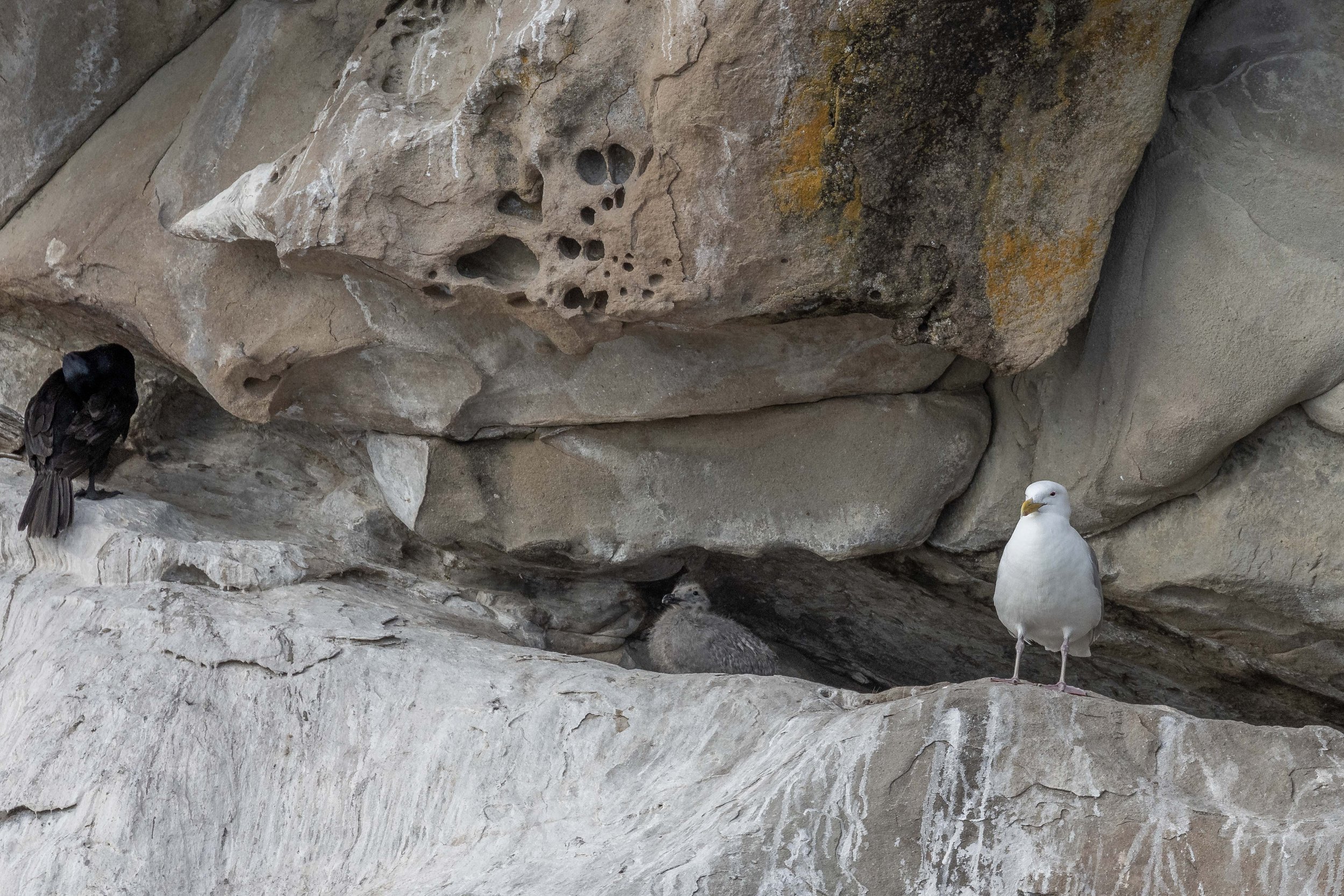July 23, 2024, 3:30 PM - A humpback here, there, and everywhere
Our semi-covered boat and one open boat headed out into the Strait of Georgia this afternoon. We’ve been having pretty good luck out there with Humpback Whales lately. We have a 95% success rate of finding whales for our guests. This afternoon was no different. Within an hour of pushing off, both of our boats had a humpback whale to hang out with.
Our open vessel Cascadia ended up finding Prowler (BCX1660) while our semi-covered vessel Kula found Graphite (BCX2077). Out here in the Strait, there’s a lot of food for Humpback Whales. Our waters are filled with plankton, which are tiny little plants and animals that make our waters pretty murky. Plankton undertakes a daily migration, moving down in the water column for the day, and coming back up to the surface at night. What’s the reason for this? It is to avoid predation during the day! Humpback whales are adapted for diving, and can reach 300 meters on their best days, but generally will stay shallower than that. At depth, there are a lot of plankton, small fish, and small shrimp-like creatures known as krill. Once at depth, a humpback whale will open its mouth and take in a gulp of seawater. Humpbacks have pleats running from their chin to their stomach, which can help expand their mouth and take a bigger mouthful. They close their mouth and push out everything that’s not food through their baleen. Baleen is essentially a huge filter hanging down from the top of their mouth made out of a protein called keratin. Then they swallow their food.
Fun fact: you cannot get swallowed by a humpback whale! Their throat is only about as big as an orange, or about 10 centimetres in diameter, so they couldn’t swallow a person even if they wanted to. Prowler and Graphite didn’t seem too interested in us today though - just the food hanging out below the surface. So we left them to it and went to see who else we could find!
We were successful and came across Niagara (BCY0057) and Yogi (BCY0409). Both of these whales are in their 20s, so they’re likely 15 or 16 meters long and between 30 and 40 tons! Graphite from earlier is only 3 years old, so they’re quite a bit smaller than these two! It’s always fun for us to see the diversity of whales here in the Salish Sea. We watched these two whales for a while and then headed off to find some other wildlife.
While our focus is of course the whales, we also stop for multiple other species of wildlife. Today we got to see some Harbour Seals, Steller Sea Lions, Cormorants, Seagulls, Bald Eagles, and even happened across a Rhinocerous Auklet and our resident family of River Otters at the dock! It was a gorgeous day on the Salish Sea.
Photos today were taken by Marine Naturalists Aly Kohlman and Hayleigh Hilbert.
BCX1660 Prowler going on a dive. Photo by Hayleigh Hilbert.
A perfect side profile of Prowler! Photo by Hayleigh Hilbert.
Prowler surfacing in silver seas. Photo by Hayleigh Hilbert.
BCX2077 Graphite’s dorsal fin. Photo by Aly Kohlman.
A cool angle of Graphite. Photo by Aly Kohlman.
Lots of scarring on Graphite. Photo by Aly Kohlman.
BCY0057 Niagara. Photo by Hayleigh Hilbert.
A cool angle of Niagara. Photo by Hayleigh Hilbert.
Niagara has white dots on both the top and bottom of his fluke. Photo by Hayleigh Hilbert.
The barnacles on the tips of Niagara’s tail are acorn barnacales! Photo by Hayleigh Hilbert.
Some cool patterning on Niagara. Photo by Hayleigh Hilbert.
A fluke waterfall - the best kind. Photo by Hayleigh Hilbert.
BCY0409 Yogi’s dorsal fin. Photo by Aly Kohlman.
You can see how different Yogi is from Niagara! Photo by Aly Kohlman.
What marking would you use to identify Yogi? Photo by Aly Kohlman.
The top of Graphite’s fluke. Photo by Aly Kohlman.
Some Rock Sausages, we mean Harbour Seals, on the rocks at low tide. Photo by Hayleigh Hilbert.
It is peak pupping season for these Harbour Seals! Photo by Aly Kohlman.
Mom and what appears to be a very young pup. Photo by Aly Kohlman.
What do you think she’s looking at? Photo by Hayleigh Hilbert.
One of the smaller male Steller Sea Lions at Stinky Rocks. Photo by Hayleigh Hilbert.
Lots of squabbles over the best real estate. Photo by Hayleigh Hilbert.
There are actually little claws on those flippers! Super useful if you’ve got an itch. Photo by Hayleigh Hilbert.
Some of our sea lions get a bit too, ahem, “comfortable”. Photo by Aly Kohlman.
A Bald Eagle in the trees. Photo by Hayleigh Hilbert.
Bald Eagle bravely sitting on Stinky Rocks. Photo by Hayleigh Hilbert.
A seagull and their chick. Photo by Hayleigh Hilbert.
These two young ones are pretty protected up in their cave. Photo by Hayleigh Hilbert.
Cormorants holding out their wings to dry off. Photo by Aly Kohlman.
A Rhinoceros Auklet! Photo by Aly Kohlman.
Our resident River Otters sleeping under the dragon boats. Photo by Aly Kohlman.
A sailboat in front of Mt. Baker. Technically it’s considered an active volcano, but we see very little if any activity from it. Photo by Aly Kohlman.
































